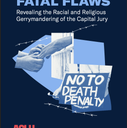
Since 1973, juries in Texas have had to determine whether a defendant presents a future danger to society before imposing a death sentence. But while they have found that each of the 244 men and women currently on the state’s death row poses “a continuing threat to society,” experts argue that juries cannot accurately predict a defendant’s future.
According to Dr. Mark Cunningham, a psychologist and leading researcher on the issue of future dangerousness, “[j]uries show absolutely no predictive ability whatsoever” on this issue.
In Texas capital cases, prosecutors typically present testimony from psychiatric witnesses who offer their opinion that the defendant will commit future acts of violence. One witness, psychiatrist Dr. James Grigson, testified in 167 capital cases, repeatedly responding to hypothetical questions posed by prosecutors (even after he was expelled from state and national professional associations because of this practice) that defendants whose institutional records he had never reviewed and whom he had never evaluated were certain to commit future acts of violence. The Texas Court of Criminal Appeals recently granted a stay of execution to Jeffery Wood—who had no history of violence and did not himself kill anyone — to permit him to challenge Dr. Grigson’s testimony in his case as false and unscientific.
Studies show that the ostensibly objective inquiry into future dangerousness has not reduced the arbitrary imposition of death sentences and that, in fact, testimony on the issue has often instead introduced racial bias into trials. The U.S. Supreme Court is currently considering the case Buck v. Davis, in which a psychologist testified that the fact that defendant Duane Buck (pictured) is African-American increases the likelihood that he presents a future danger to society. A study led by Stanford University Prof. Jennifer Eberhardt found that in interracial murders involving a White victim and a Black defendant, the physical features of the defendant greatly affected the outcome of the case. In those cases, defendants with stereotypically African facial features were more than twice as likely to be sentenced to death as Black defendants who had a less stereotypically African appearance.
The American Psychiatric Association has sought to eliminate the question of future dangerousness from jury decisions, writing in an amicus curiae brief to the U.S. Supreme Court: “[t]he unreliability of psychiatric predictions of long-term future dangerousness is by now an established fact within the profession.” Kathryn Kase, director of the Texas Defender Service, described the determination of future dangerousness as “akin to giving jurors two cotton swabs, asking them to look at them and saying, ‘Does the DNA match?’ If an expert can’t figure it out, then how can jurors do that? It is no accident that African Americans are overrepresented on death row.”
Abbie Vansickle, A Deadly Question, The Atlantic, November 19, 2016.


